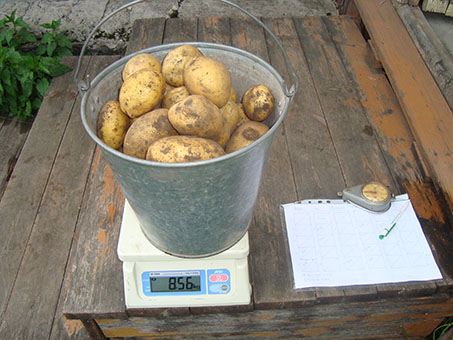Potato tuber yield and quality under potassium and magnesium addition on top of the nitrogen and phosphorus fertilization
DOI:
https://doi.org/10.31251/pos.v7i2.268Keywords:
West Siberia; agricultural grey soil; mineral fertilizers; potato; tuber sensory properties; soil and environmental factors.Abstract
The aim of the study to investigate the effect of individual or combined K and Mg addition on potato tuber yield and quality along the gradient of soil and environmental conditions, which was formed by the five experimental plots in the forest-steppe one of West Siberia.
Location and time of the study. Microplot field experiment with moderately early potato cultivar Jelly with three fertilization treatments (N100P60, N100P60+K100 and N100P60+K100+Mg100) was setup in five replicates on five experimental plots with agricultural grey soils in the Novosibirsk Region in 2023. Geographical coordinates of the experimental sites varied from 55°15'40" to 54°47'09" NL and from 83°31'42" to 82º37' 56" EL.
Methods. Instead of traditional temporal gradient (3–4 years of the experiment at a site) to account for weather variation, with the same purpose we used a spatial gradient, which in addition allowed to assess the effect of soil properties variation among the sites. Soil samples, collected prior to the experiment, were analyzed for organic carbon content, nitrate and ammonium nitrogen, exchangeable phosphorous, potassium and magnesium, as well as soil pH and electrical conductivity. In the course of the experiment air and soil (at 5 and 15 cm depth) temperatures was automatically recorded. At the end of the experiment potato tuber mass and number, as well as the aboveground phytomass, were measured at each microplot. After five months of tuber storage sensory properties (flavour, aroma, colour, mealiness and friability) of boiled tubers were assessed using a Hedonic scale. Analysis of variance, principal components extraction and multiple regression by partial least squares method were performed using Statistica v. 13.1. software.
Results. Addition of K at the background NP fertilization (N100P60+K100 treatment) increased tuber yield by 30% and the aboveground phytomass by 40%. Addition of Mg (N100P60+K100+Mg100) did not affect yield properties, but markedly improved potato culinary quality. More than half of the variance of the potato yield properties was accounted for by the variation in soil and environmental conditions of the experimental fields location. Exchangeable Mg, ammonium N and soil pH were the main soil properties, allowing to forecast the current year tuber yield. The contribution of soil and environmental conditions of the experimental fields into the variance of the sensory properties, albeit small, was statistically significant (p≤0,05) for aroma and colour, with the similar trend for flavour and friability (0,05≤p≤0,10). Agrochemical properties, i.e. soil organic carbon, readily exchangeable P and nitrate N contents, as well as soil pH, were the main variables, determining tuber quality for consumers.
Conclusions. The study performed on the agricultural grey soil in the forest-steppe zone of West Siberia confirmed the importance of optimizing potato mineral nutrition. Addition of NPK at the balanced rates significantly increased potato yield as compared with NP. Although addition of MG together with NPK did not increase the yield, it markedly improved sensory properties of potato. Some soil properties and temperature conditions, found to determine the yield (effective soil fertility), can be used in prognostic models for potato tuber yields and quality.
Downloads

Downloads
Published
How to Cite
Issue
Section
License
Copyright (c) 2024 The Journal of Soils and Environment

This work is licensed under a Creative Commons Attribution 4.0 International License.






